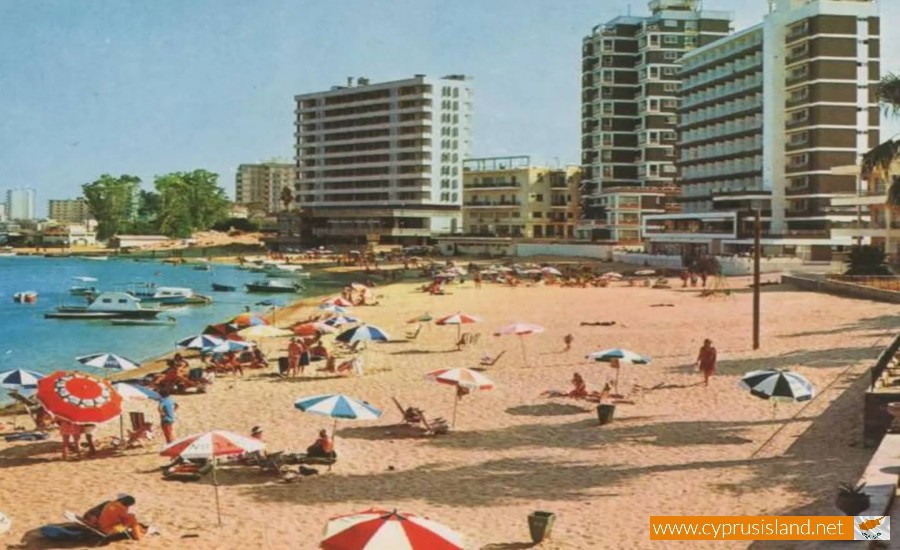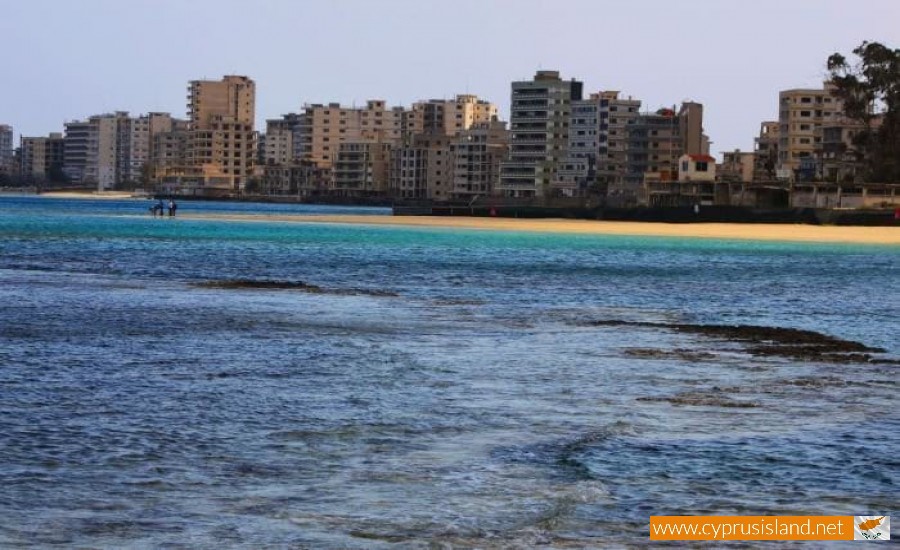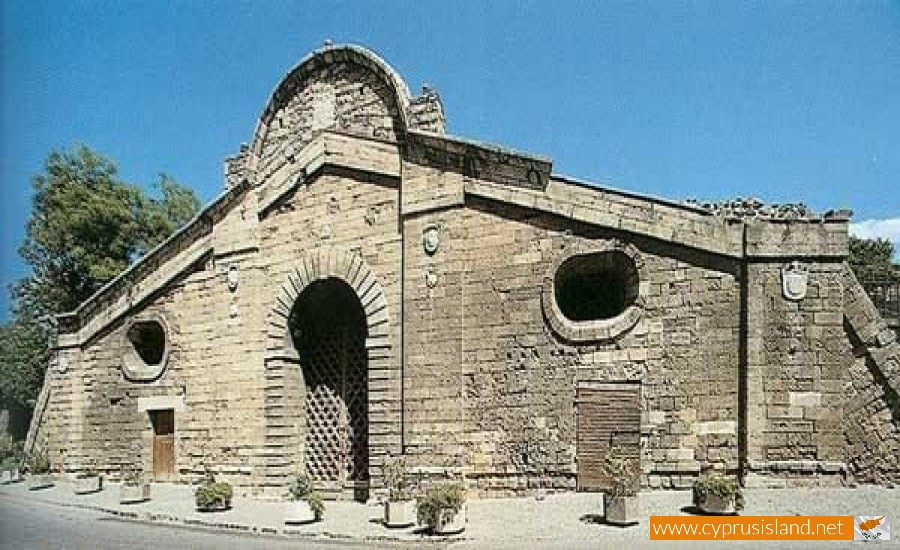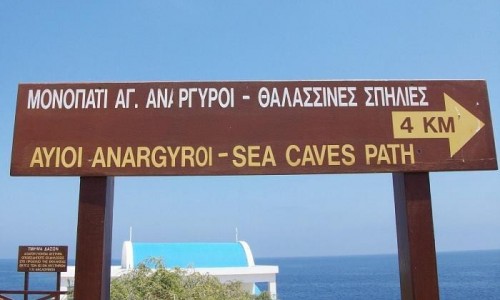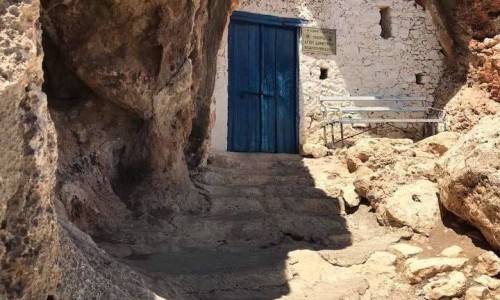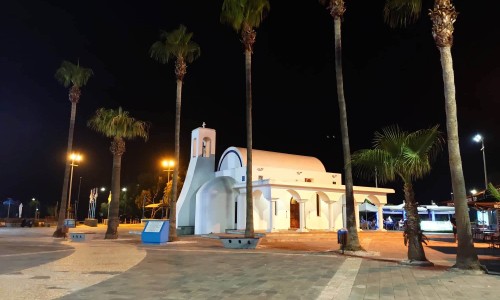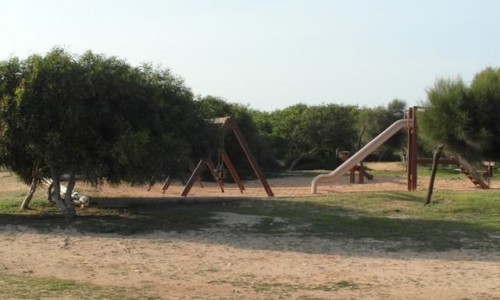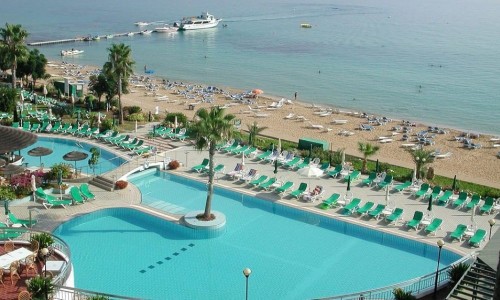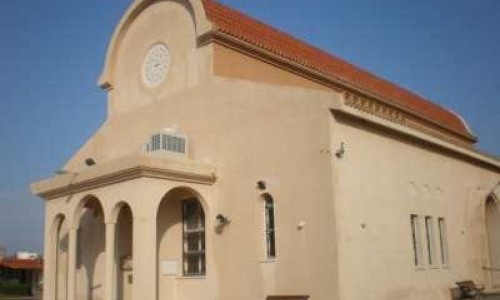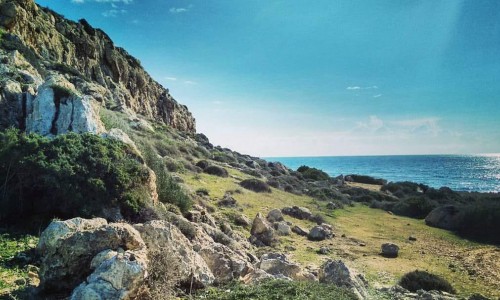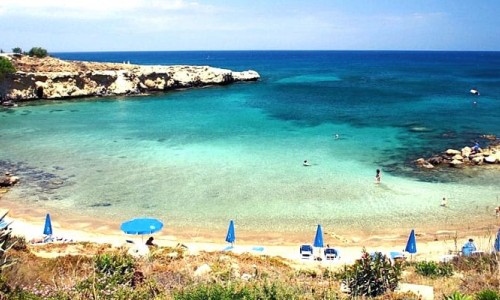Famagusta (Ammochostos)
Famagusta or Ammochostos is a town in Cyprus and is located at the eastern part of the island, at the bay which brings its name. Ancient Ammochostos was originally named as Salamina. It was later named to Arsinoy and Konstandia.
The Greek Cypriot residents were evicted in 1974 by the Turkish army. It is referred to with this name from the 4th century A.D which literally means the town covered in sand. Ammochostos was internationally known as a tourist resort between 1960 and 1974 due to its sandy beach. Ammochostos (It's Frank name Famagusta) is the capital of Ammochostos district of Cyprus with about 40.000 residents. Ammochostos is located at a lowland and prosperous area, with a great agricultural production. One of the basic products in the area are wheat, vines, citrus and olives while a small amount of cotton was produced. The port in this town is one of the best natural ports which Cyprus has. It is also the only port which is closed. Until 1974 it was the basic part of exporting agriculture products.
Famagusta is one of the old towns of Cyprus. The town was first built during the 3rd century B.C by the Ptolemeous and was named Arsinoy in honour of the queen Arsinoy B’ Filadelfou , of the famous Greek Queen of Egypt during the Hellenistic years. Ammochostos was really the descendant of the most famous and most important ancient city in Cyprus, Salamina. During the Greek mythology, Salamina had been established after the end of the Trojan War by Tefkros, the son of Telamona and his brother Eandas from the Greek island of Salamina.
Byzantine Empire
The town met an increase, much later during the time of the Byzantine emperor Ioustianos. In order to honour the town from where his wife was from, Ioustianos made many building while the residents called the city New Ioustiania in order to express their gratitude. In 647 A.D when all the neighbouring cities were destroyed by the Sarakinous raids the city residents moved to Ammochostos , resulting to the increase and blooming of the city.
Arabs
When the Holly Lands were taken over by the Arabs, the Christian population fled to Ammochostos resulting in the transformation of the city to an important Christian centre but also to one of the most important centres in the Eastern Mediterranean. That way it didn’t take long to be the centre of attention of many Christian people of the we
Franks
Famagusta met great development and prosperity during the period of the Franks especially during the 13th and 14th centuries. Surrounded by powerful walls, it was the greatest port in the Eastern Mediterranean and one of the richest cities. Communities of many Venetian, Wenetan, Pizanian, Neapolitan, Catalan, Massalan, Syrian and other merchants lived in the city which transformed into a great forwarding station between East and West. The variety of trading activities resulted in the gathering of many riches in Ammochostos. Brilliant palaces and other buildings decorated the city, out of which the gothic cathedral of Saint Nicholas stands out. In the temple the Frank Kings of Cyprus were crowds as Jerusalem Kings. The first to take over Ammochostos was Richard the Lionheart, while after him came the French Louzinian who was crowned as the King of Cyprus in Jerusalem. However Ammochostos was taken over by the Genovese in 1373, who had a strong army and was kept by them for nearly a century. After its capturing in 1489 by the Venetian, the town becomes fortified and transformed into a commanding centre and general headquarters for the East Mediterranean. In the known tower of the city, tradition places the end of the Shakespearean tragedy “Othello”. Othello was considered to be inspired by Christopher Moro, a Venetian officer who had commanded Ammochostos during 1505-15
Ottoman and British Empires
Famagusta resisted heroically during the invasion by the Ottoman, who occupied Cyprus in 1570, resisting a difficult siege which lasted eleven months until August in 1571. Despite the fact that the Turkish attacks were raging, the city had repulsed them all. It is said that in front of Famagusta walls, the Ottoman had 80.000 deceased. However after eleven months and with its defendants nearly starving to death and had used all their ammunitions, fighting only with sticks and stones, the town finally decided to give up and sign a constitution. The Ottoman didn’t keep their agreement and violently slaughtered the villagers. The brutality of the Ottomans was so much that they skinned the Venetian governor Marco Antonio Brogadin and was considered lucky to be executed so quickly. It wouldn’t be an exaggeration to say that due to the wilderness of the Ottomans, the Rome Pope Pious the fifth organised the “Holly alliance” (Sacra Lingua Antiturca)which climaxed with the Napfaktou sea fight and the destruction of the Ottoman dominion in the Mediterranean. During the Turkish occupation, Ammochostos was at a decline state as was the whole of Cyprus. It began to develop after Cyprus’ occupation by the British (1878). Along with other things, the British improved an extended the city port and they connected it with the capital of Nicosia, while the Cypriot Government Railroad had their main offices in Ammochostos.
Independence
Famagusta developed after the announcement of its independence in 1960. The city then began a large economic centre and becomes nationally known as an important tourist resort. Between the extended orange trees which surrounded the city, and the sandy beaches, modern hotels well-built and then Famagusta took a keen cosmopolitan view.
Monuments
The fortress of Famagusta is known by the name “The tower of Othello”. Also in good condition are the medieval town walls and within these rebels and many other monuments and many important churches. It is said that Famagusta had a total 365 churches and monasteries. From the architectural buildings which are saved until today, the Cathedral gothic temple of Agios Nikolaos which has been transformed into a Mosque. There are also rubbles from over 300 churches.
Country | Cyprus |
District | Famagusta |
Population | 42,526 |



